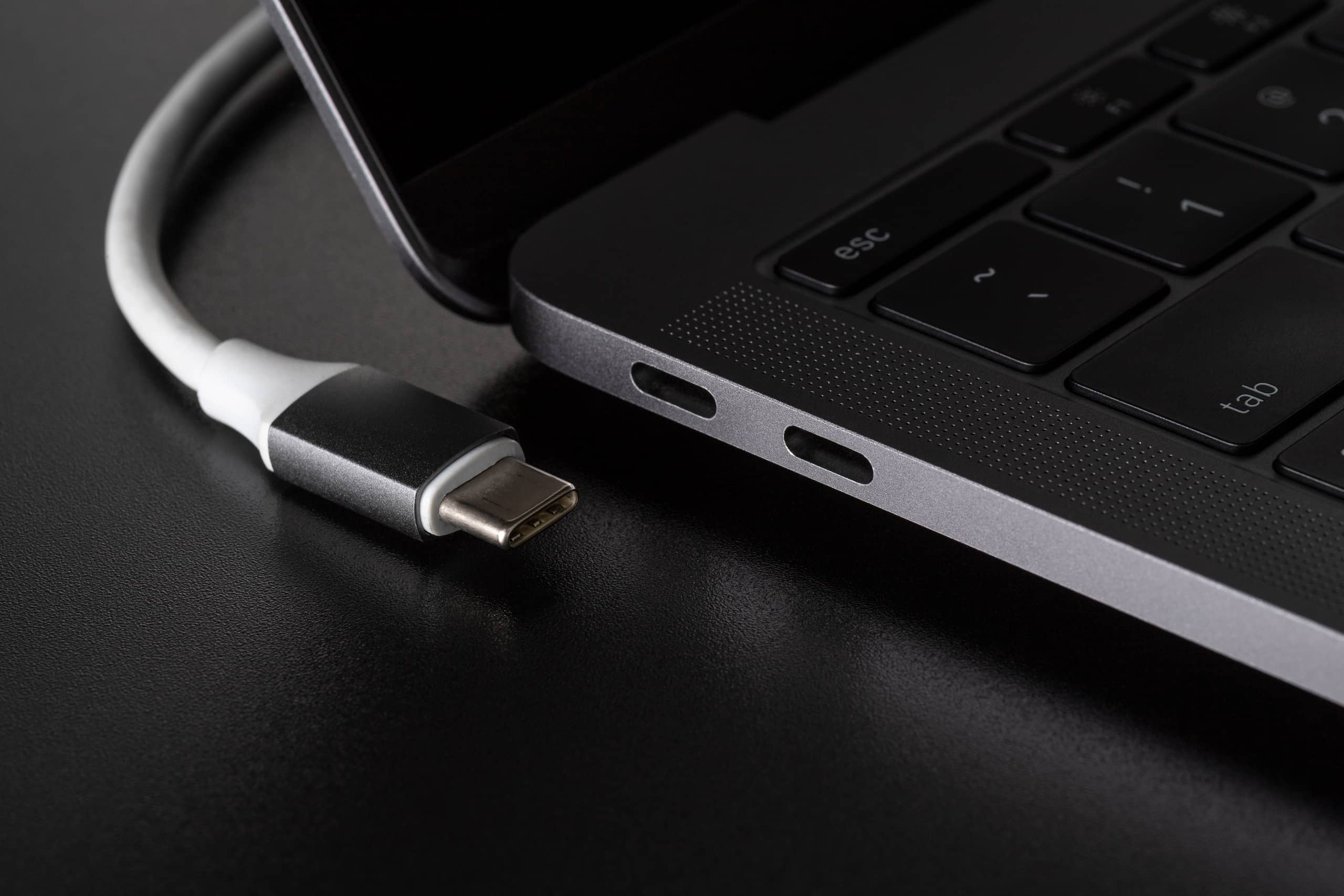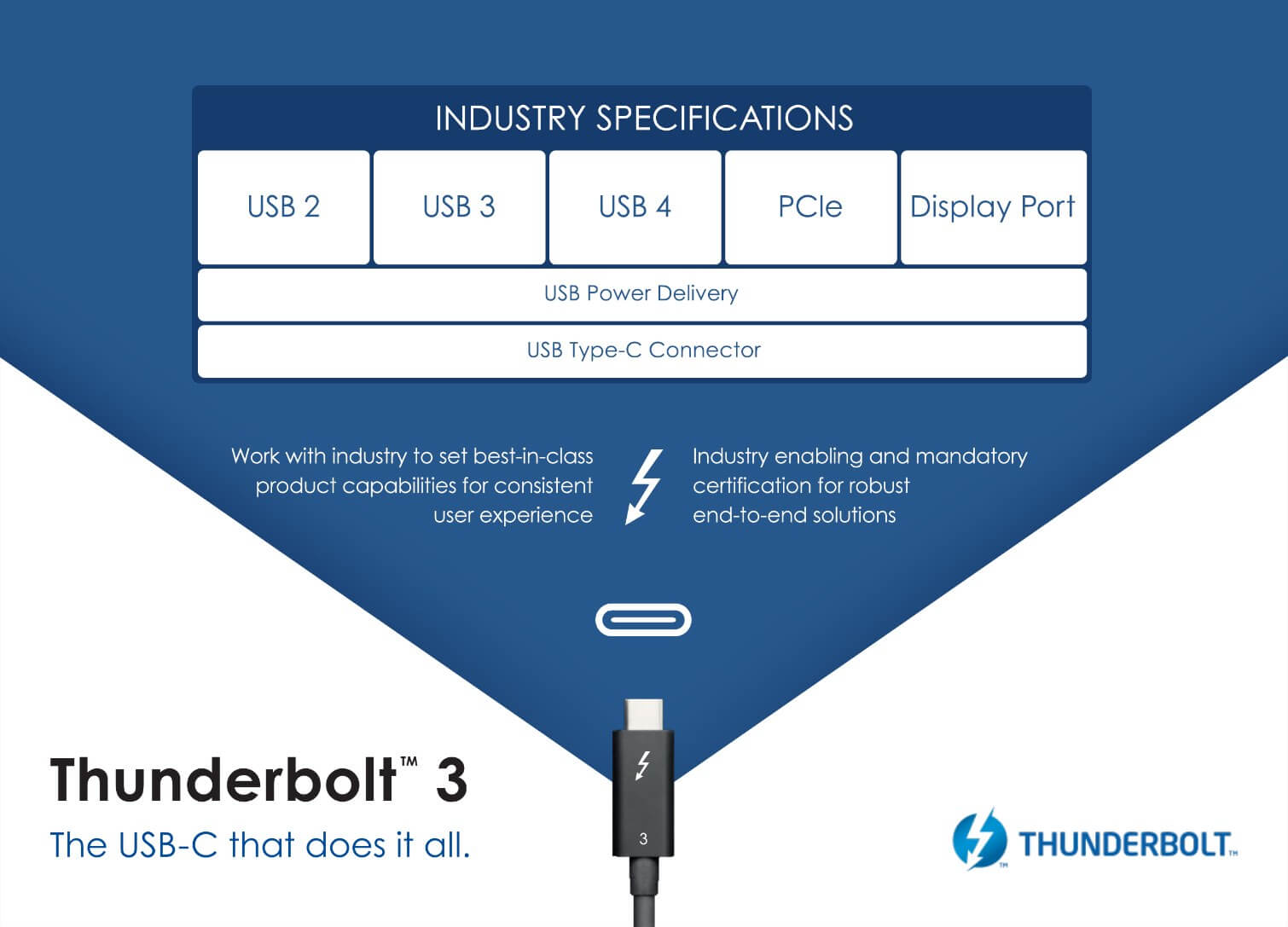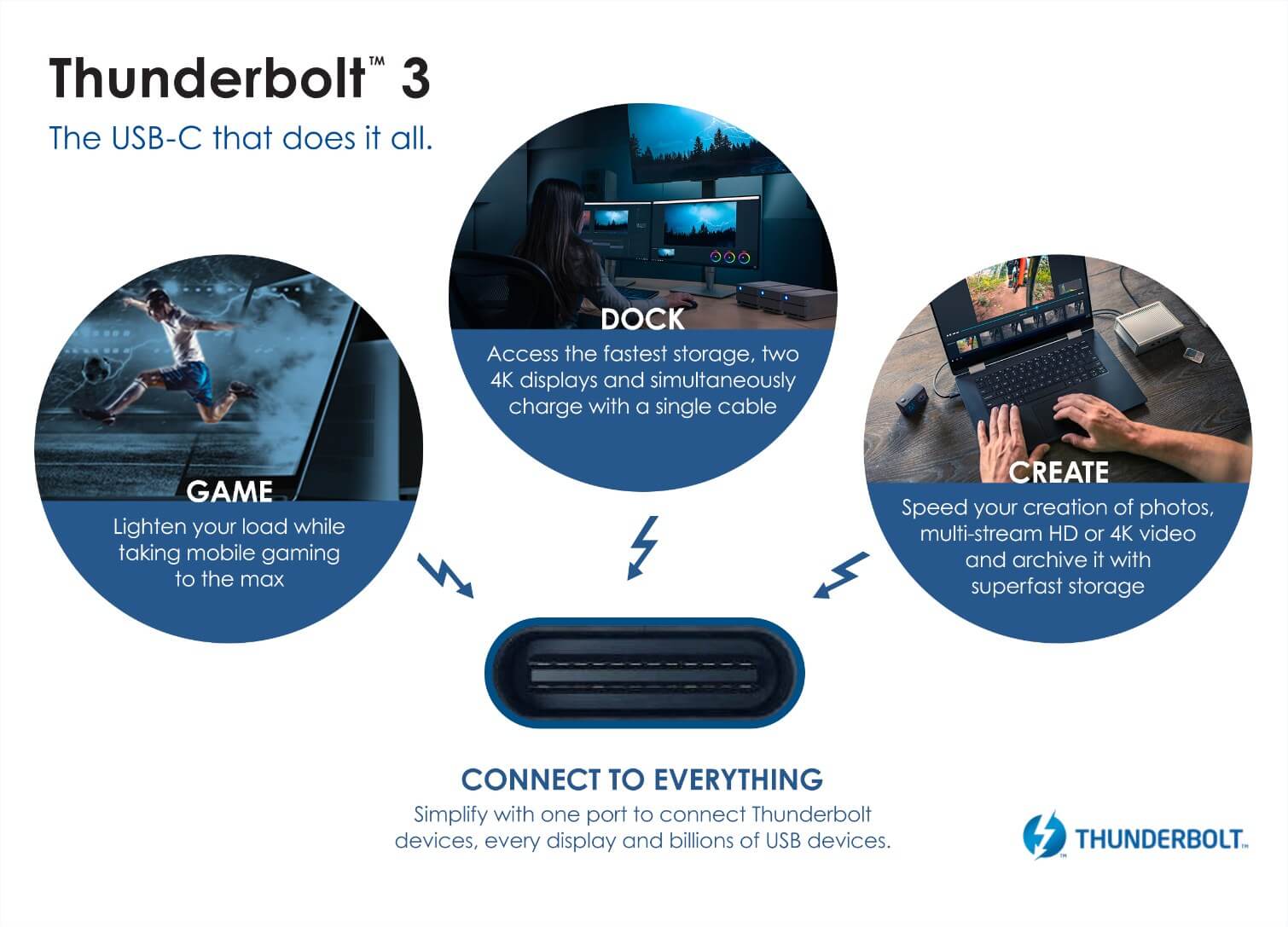Something to look forward to: It was only last week when the USB Implementers Forum (USB-IF) revealed details of the new USB 3.2 format and name changes for USB 3.0/3.1. Now, the organization has announced USB 4, which increases the maximum 20Gbps offered by USB 3.2 to 40Gbps.

That 40Gbps speed has been available to users of Thunderbolt 3 for a few years now. Back in 2017, Intel said it would be making the protocol royalty free for chip makers and device manufacturers. That’s finally happening, with the technology being integrated into USB 4.
As with the current Thunderbolt 3 specification, USB 4 can daisy-chain external graphics card enclosure, two 4K monitors, and other Thunderbolt 3 accessories using a single cable connected to a PC. USB 4 will be compatible with USB 2.0 and 3.2, too.
“The primary goal of USB is to deliver the best user experience combining data, display and power delivery over a user-friendly and robust cable and connector solution,” said Brad Saunders, USB Promoter Group Chairman. “The USB4 solution specifically tailors bus operation to further enhance this experience by optimizing the blend of data and display over a single connection and enabling the further doubling of performance.”
Last week, the USB-IF revealed USB 3.2-capable controllers that allow 20Gbps speeds (10Gbps per lane) would be available later this year. The first USB 3.2 chips are likely to arrive on high-end motherboards this summer, though the peripherals that take advantage of this standard will take longer to get here.
Intel has already said it plans to include Thunderbolt 3 support directly in its upcoming 10nm Ice Lake processors, meaning they could be the first chips to support USB 4.
The full USB 4 specification will be published in the second half of this year, but we likely won’t see any devices for another year and a half.
https://www.techspot.com/news/79019-usb-4-double-speed-usb-32-40gbps.html

